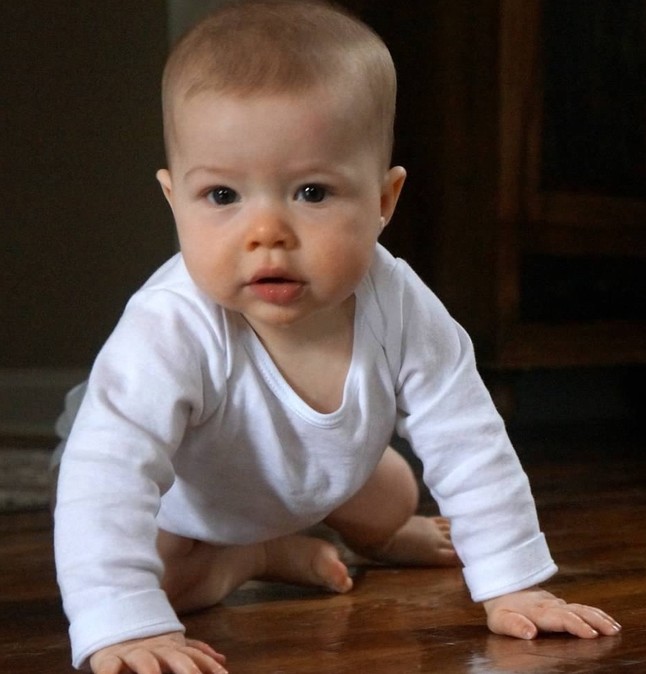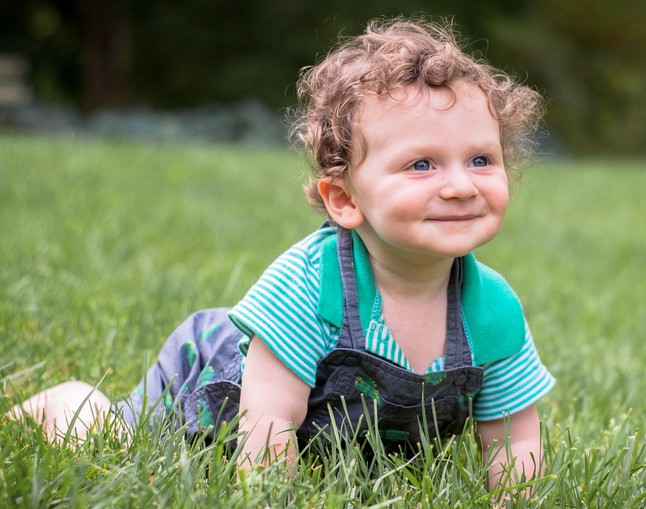To Crawl or not to Crawl?
 Recently a few parents have been asking me if it's okay for their child to skip the crawling phase of gross motor development. In doing a quick Internet search the results are contradictory. Some people will say that crawling is very important and some people think it's not a critical part of gross movement development.
Recently a few parents have been asking me if it's okay for their child to skip the crawling phase of gross motor development. In doing a quick Internet search the results are contradictory. Some people will say that crawling is very important and some people think it's not a critical part of gross movement development.
Here's what I have seen:
Crawling is by definition a mode of locomotion on hands and knees. This leads to shoulder muscle and hip muscle activation and strengthening, which is necessary for upright mobility later.
Crawling promotes movement of one arm at the same time that the opposite leg is moving. This enhances alternating trunk movement necessary for coordinated-looking walking and running when the baby is older.
Crawling encourages mobility in a position of forward-bending. This serves as an early way to strengthen the abdominal or tummy muscles. Once a child is old enough to stand they tend to use their back muscles for stability. Without the balance of the tummy muscles to keep the rib cage and hips in a good position, posture, alignment and muscle use will be compromised.
Crawling allows independent mobility at a younger age than walking. This enhances the potential for environmental exploration, sensory exposure (like this little guy getting used to the way grass feels) and learning.

Crawling is an important skill for visual development. While on hands and knees, children will look at objects that are close (down at their hands) and then lift their head to look at things in the distance, developing depth perception. It facilitates the ability to scan the environment from side to side at all levels of head position. These experiences prepare children for school, when they will need to change their visual focus from their paper or computer to the front of the class.
I have seen a couple teenagers in our clinic recently because of back, hip and shoulder pain. It makes sense to me that they report to have scooted on their bottoms instead of crawling on hands and knees when they were little.
Bottom scooting promotes an extended or arched posture and movement pattern with little use of abdominal muscles, and little change in head position. Further, kids who scoot on their bottoms don’t get to practice moving from a sitting position to a hands and knees position, or moving their hips over their thigh bones, an important component for walking. Over time, the lack of abdominal strength and coordination seems to result in poor skeletal positioning, and potentially the development of pain as the body matures. Later, when teenagers ask more of their bodies in both competitive and recreational sports, their altered position and lack of muscle balance can't support sports posture and movements and injury can result.
To crawl or not to crawl, that is the question.
Crawling is the answer!
If you have any questions or concerns about the movement patterns of your infant, baby, or child, I would be happy to talk with you, offer some things to look for and to try, or to perform a full evaluation in our Chapel Hill clinic. Please see "Contact Me" or "Ask the Expert". Thank you.